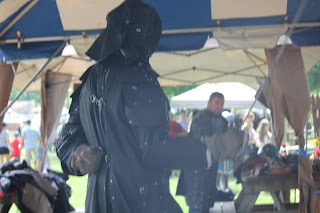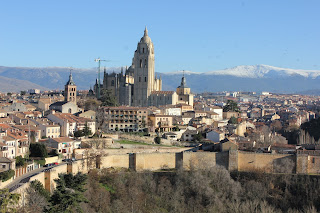This is the 1562 panorama of Segovia. This view is looking north from the old cemetery on the opposite hill, which is why there are graves being dug in the foreground.
This view is from a slightly different spot (I think Wyngaerde was farther west), but pretty close. The tower is the Church of St Michael (Iglesia San Miguel), just east of the Cathedral. The roof has changed but the tower itself is recognizable. The hillside is now wooded, making a panorama difficult at best.






























